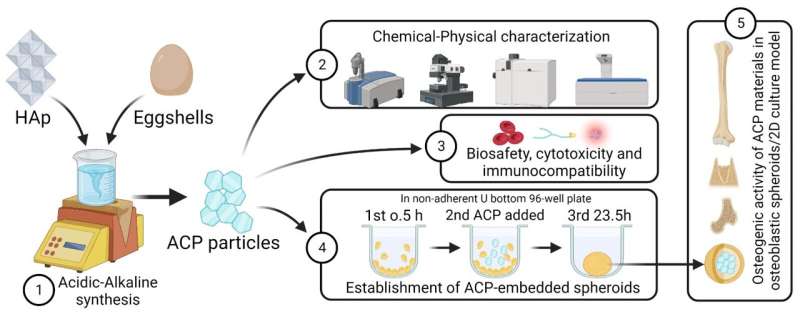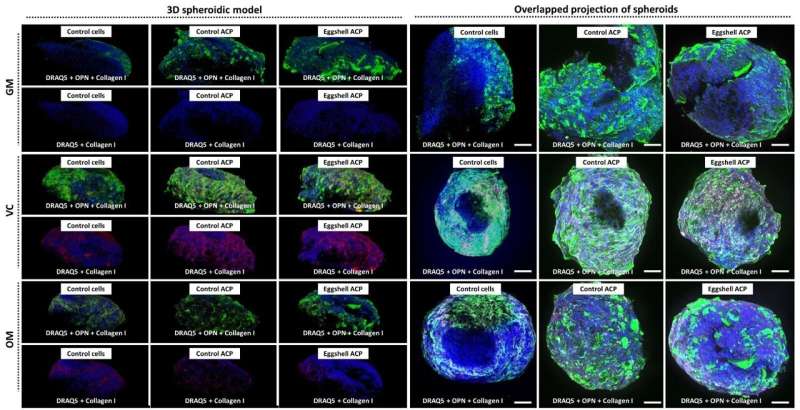This article has been reviewed according to Science X's editorial process and policies. Editors have highlighted the following attributes while ensuring the content's credibility:
fact-checked
proofread
Pushing frontiers through upcycling: Eggshell waste for bone graft material

Autologous and allogeneic bone grafts are considered the gold standard when it comes to reconstructing bones, largely due to their bioactive compounds and osteoblastic cells that can generate new bone effectively. However, limited supply, donor-site complications, and risk of disease transmission have deterred its widespread use.
In contrast, xenograft materials represent a feasible alternative because they are safe to use and come in abundance; even though they stem from mammalian tissue which is costly, poses environmental risks and ethical issues especially in underprivileged regions. Nonetheless, xenograft materials do have their limitations. Most commercialized xenograft materials are prepared from mammalian tissue with heavy bio-cost, environmental pollution and potential ethical issues, especially in underdeveloped areas.
Therefore, a top priority of bone graft materials development is to obtain safe, modifiable, and environmentally friendly synthetic biomaterials capable of replacing natural graft materials—the exact motivation that spurred a new discovery by an international team of researchers.
Recently, a research team developed a dissolution-precipitation method to convert eggshells into endotoxin-free and immunocompatible amorphous calcium phosphate (ACP) particles.
"Eggshells is an ideal raw material to synthesize bone graft materials as it contains plenty of calcium and phosphorous components," said first author of the study, Dr. Qianli Ma Qianli Ma the Department of Biomaterials at the University of Oslo (UiO). "In addition, some trace elements associated with bone regeneration, such as magnesium and strontium, are also found in eggshell."

Further, the team established a novel 3D spheroid model for studying the osteogenic activity of eggshell ACP in vitro. In the model, ACP materials were observed to interact with osteoblasts more realistically, and were safe, cell-friendly and effective in promoting bone regeneration.
"This technique promises to create an unlimited supply of bioactive and sustainable bone graft materials while reducing the environmental pollution," said senior and corresponding author Professor Håvard Jostein Haugen, who is from the same department at UiO. "The osteoblastic spheroids constructed in the study provided a more practical biomaterial research model, reflecting the three-dimensional interactions between cells and biomaterials."
The researchers hope their latest findings, published in Smart Materials in Medicine, will inspire further work on converting ordinary food waste into high value-added biomaterials. Meanwhile, the team is working towards an ideal in vitro model that can replace in vivo research in animal models.
More information: Qianli Ma et al, Eggshell-derived amorphous calcium phosphate: Synthesis, characterization and bio-functions as bone graft materials in novel 3D osteoblastic spheroids model, Smart Materials in Medicine (2023). DOI: 10.1016/j.smaim.2023.04.001
Provided by KeAi Communications Co., Ltd.





















